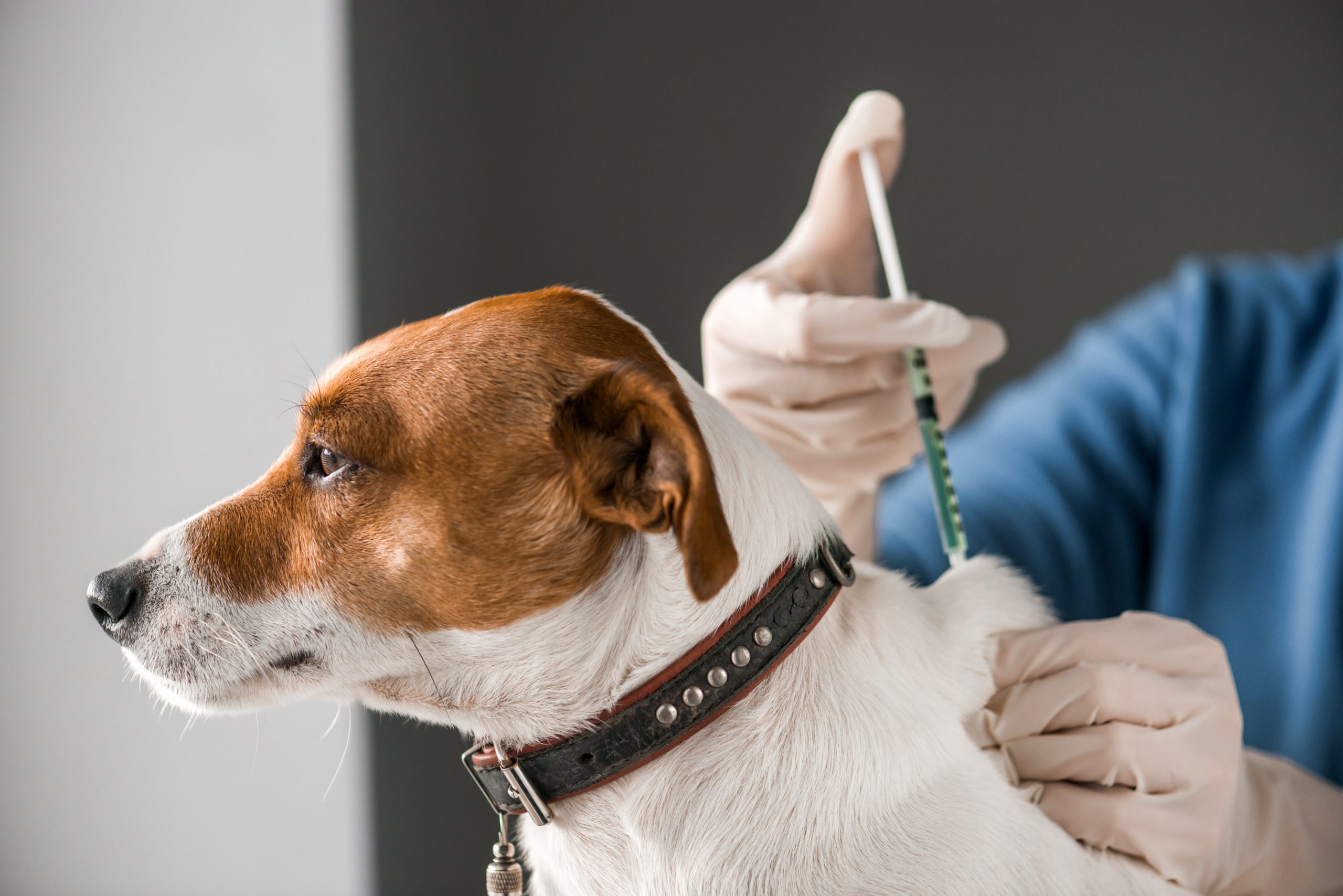
In dogs, the rabies virus is both a devastating disease that ends in fatality if contracted when unvaccinated, and 100% preventable if they’re vaccinated. It’s difficult to overstate how important it is to stay up to date with your dog’s rabies immunization.
The disease can affect mammals from livestock to wildlife, but dogs transmit 99% of cases of rabies in humans worldwide, according to the World Health Organization. In 1983, the Pan American Health Organization mounted a coordinated effort to eliminate rabies transmitted from dogs to humans in North and South America through proactively vaccinating canines. They’ve been largely successful. In 1983, there were 300 cases of dog transmission of rabies in the Americas; 40 years later, in 2023, there were only three.
Read on for how to protect yourself and your dog from this serious disease.
What is rabies?
Rabies is a viral zoonotic disease—or a disease that can be spread between people and animals—transmitted through the saliva or mucus of an affected mammal. It inflames the nervous system and leads to symptoms like odd behavior, aggression, paralysis, and coma before death.
How do dogs contract rabies?
Like all mammals, dogs contract rabies if a rabid animal bites, scratches, or licks broken skin. Wild animals like racoons, bats, skunks, and foxes account for the majority of reported cases of rabies in the United States, and, according to one 2022 study, more than 50% of all cases were reported in Texas, Virginia, Pennsylvania, New York, North Carolina, and California.
Once rabies enters the body through broken skin, the virus travels from the nerves to the spinal cord and then to the brain where it inflames the central nervous system. From the brain, it spreads to the organs and salivary glands, and becomes transmissible through saliva.
The rate of rabies’ spread within the body varies depending on the seriousness of the bite or scratch—that is, how much of a viral load is transferred upon contact—and its proximity to the spinal cord and brain. For humans, signs can appear ten days after a bite, scratch, or lick from an infected mammal, and may take up to a year to show. In dogs, ten days to four months is more typical.
What are the signs of rabies?
As the disease progresses through a dog’s body, there are two stages of symptoms. The first is called the “prodromal phase” where the dog starts acting uncharacteristically for about two to three days. They may be suddenly agitated when previously they were calm, or nervous and shy where they were once active and confident.
The second phase shows up in one of two ways: furious rabies and dumb rabies. Dumb rabies is more common in dogs and is identified by gradual paralysis. Dogs often have trouble swallowing which leads pet parents to misdiagnose them with a blockage in their throat. In this version of the disease, they fall into a coma and eventually die.
Furious rabies is likely the more well-known rabies presentation. Dogs with this aptly named type of the disease go through periods of sudden aggression, excitability, or irritability. They lose their appetite for food, but may eat inedible things, like stones. Dogs with this type of rabies can also suffer from paralysis, but usually die from seizures.

Is rabies treatable?
Sadly, rabies is not treatable in dogs. Per the Centers for Disease Control, dogs who are exposed to rabies through bites or scratches from a rabid animal and are not current with their rabies vaccination will be euthanized. Owners who won’t allow euthanasia must quarantine dogs for four months, or the amount of time prescribed by the state. Infections can only be diagnosed with a biopsy of brain tissue, which can only happen after the death of the dog.
That’s why it’s crucial to keep your dog current on their rabies vaccine. For dogs who are exposed to rabies but who have up-to-date vaccinations, veterinarians will likely administer a booster vaccine. The dog will still be required to quarantine, though for a shorter length of time, also in accordance with their state’s regulations.
How can I prevent my dog from contracting rabies?
The good news is that rabies is completely preventable with vaccination. It’s strongly advisable, and legally required in most states, to stay on top of vaccinations. Pet owners should keep their dog’s immunization records on hand should they be involved in a dicey situation where rabies may have been transmitted. (When dogs get rabies vaccines varies from state to state, but the general rule is at least after three months of life for the first shot, and then follow subsequent booster timeline. For example, in New York State, dogs begin rabies vaccinations between three and four months of age, and then get a booster one year later, and then another booster the following year or four years later depending on the vaccine). You’ll likely need to provide those records to the vet to ensure the appropriate course of action is taken.
Likewise, having those records on hand will protect your dog should they bite another person or animal. You’ll likely have to provide proof that there’s no risk of rabies transfer in order to avoid having to quarantine your dog, or, at worse, euthanize them.
And, finally, regardless of their vaccination status, keep dogs away from strange animals and animals acting strangely. Do not allow them to roam free, and keep them on leash for walks.
What do I do if I think my dog was bitten by a rabid animal?
Call your veterinarian immediately if you suspect your dog has come into contact with a rabid animal. Your vet will clean and disinfect any wounds safely. If your dog is fully vaccinated against rabies, they’ll administer a booster and explain your state’s requirements for quarantine and observation. Dogs that are not up-to-date on vaccinations will be evaluated on a case-by-case basis.
You should call your doctor as well. Depending on your level of contact with the rabid animal or your own dog, you may need to begin a course of vaccinations yourself.
If you think you’ve seen a rabid animal, whether or not it’s come into direct contact with you or your dog, alert the health department or animal control. Be able to describe what the animal looked like and where you saw it.
Can I get rabies from my dog?
Yes, all mammals are able to transmit rabies to other mammals through saliva. In humans, rabies is treatable prior to symptoms showing up, and symptoms can appear within days or up to a year. It’s best to immediately call your doctor if you believe you’ve been exposed. Humans who haven’t received the vaccination previously will be administered antibodies followed by a round of vaccines. Those who were previously vaccinated from rabies will receive just the series of vaccines (the vaccines prevent the disease from entering the central nervous system where it does its damage). Don’t hesitate to seek treatment if you suspect you’ve come into contact with a rabid animal, including a dog.




